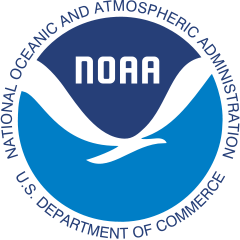Although global mean temperature has been rising since the mid-twentieth century and can be attributed to increases in emissions of greenhouse gasses, the annual number of global tropical cyclones (TCs) has remained steady at around 86 since 1980. The limited length of observed TC data and the effect of multi-decadal variability have made it challenging to detect trends in TC activity on a global scale. Read More…
There is intense public and scientific interest in the question of whether slowly moving and highly destructive hurricanes, such as Harvey (2017), Florence (2018), and Dorian (2019), could become much more common with climate change. Using high-resolution large ensemble simulations, the authors investigated whether future anthropogenic warming could lead to a significant slowing of hurricane motion, and whether the observed trends of hurricane motion during past decades could be attributed to anthropogenic forcing. Read More…
Ground-level ozone exposure harms human and plant health, especially on hot summer days when pollution from cars and power plants fuels ozone formation. Due to regulatory changes, emissions of ozone precursors have been reduced markedly in Europe, yet ozone pollution episodes have not decreased satisfactorily in recent decades. The authors show that slow progress towards improving ozone air quality in Europe can be partly explained by declining rates of ozone removal by water-stressed vegetation in response to climate warming. Read More…
The models in use at GFDL for seasonal-to-decadal prediction have performed very well but are built off rather old model physics and other components. A multi-year effort was undertaken to build a next-generation seasonal-to-decadal prediction system that took advantage of many recent modeling advancements. This effort culminated in a new modeling system called the “Seamless system for Prediction and EArth system Research” (SPEAR). Read More…
High Mountain Asia is home to both monsoonal rains and the largest concentration of glaciers outside the North and South Poles. With climate change, heavy rainfall will increase, especially in mountains near glaciers and glacial lakes. This will make landslides more likely and could present new hazards of landslides releasing a wall of water from glacial lakes, impacting communities and infrastructure located downstream. Read More…
Changes in atmospheric methane abundance have implications for both chemistry and climate, as methane is both a strong greenhouse gas and an important precursor for tropospheric ozone. The global network of methane surface observations over the past 3-4 decades indicates that methane went through a period of rapid growth from the 1980s to 1990s, nearly stabilized from 1999 to 2006, and then renewed its rapid growth. Read More…
Recent observational studies suggested that Atlantic hurricane activity is strongly affected by weather processes outside of the tropics, but modeling studies reported divergent findings regarding the importance of such an impact. Using a regional atmospheric model with imposed boundary conditions, the authors conducted idealized experiments to explore whether and how extratropical weather perturbations affect Atlantic hurricane activity. Read More…
This paper describes the GFDL’s latest multi-purpose atmosphere-ocean coupled climate model, CM4.0. It consists of GFDL’s newest atmosphere and land models at about 100 km horizontal resolution, and ocean and sea ice models at roughly 25 km horizontal resolution. A handful of standard experiments have been conducted with CM4.0 for participation in the Coupled Model Inter-comparison Project Phase 6 (CMIP6), an archive of climate model results utilized by the Intergovernmental Panel on Climate Change (IPCC) and the climate research community more generally. Read More…
The 2018 tropical cyclone (TC) season in the North Pacific was very active, with 39 tropical storms including 8 typhoons/hurricanes. Unlike the typical limitations in skill of seasonal predictions made before April initial forecasts, the active 2018 TC season was successfully predicted by the Geophysical Fluid Dynamic Laboratory Forecast-oriented Low Ocean Resolution (FLOR) global coupled model 3–5 months in advance (i.e., successful predictions from 1 February 2018). Read More…
In many parts of the world, water resources for humans and ecosystems are heavily dependent on precipitation. Terrestrial precipitation is fed by moisture originating as evaporation from oceans and from recycling of water evaporated from continental sources. Understanding the vulnerability of regional precipitation to changing climatic conditions and to changing land cover conditions is of critical importance to society. Read More…


